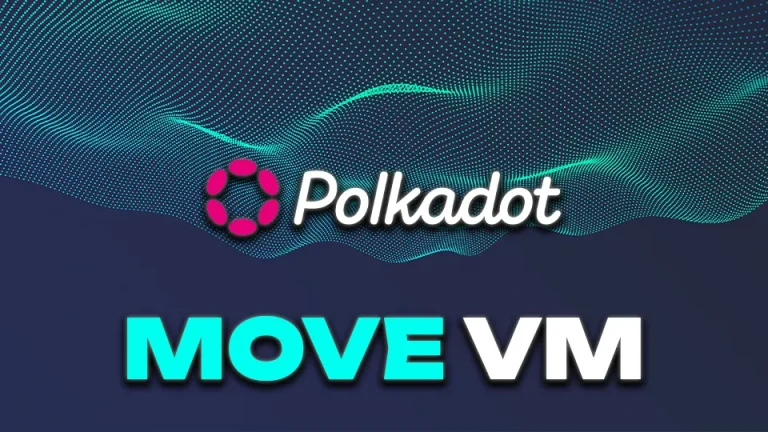As decentralized systems gain widespread adoption, the need for robust security mechanisms becomes even more critical. To address these security challenges, the Polkadot ecosystem has elaborated the Polkadot Security Hub has been established as a central resource dedicated to all aspects of security within the Polkadot ecosystem.
This article provides an in-depth exploration of the Polkadot Security Hub, its significance, and the various resources it offers to developers, security professionals, and project teams within the Polkadot network. By focusing on the most relevant security vulnerabilities, best practices, and tools available through the hub, this article aims to enhance the understanding of security measures in the Polkadot ecosystem and contribute to its overall resilience.
Understanding the Polkadot Security Hub
The Polkadot Security Hub serves as a comprehensive repository for security-related information within the Polkadot ecosystem. It is designed to assist developers and security professionals in identifying, understanding, and mitigating security vulnerabilities that may arise during the development and deployment of projects on Polkadot.
The hub offers a wide range of resources, including detailed analyses of common security vulnerabilities, guidance on best practices for securing Substrate-based blockchains, and tools to assist in effective security implementation. Additionally, it provides up-to-date information on the latest vulnerability disclosures, allowing developers to stay informed about potential risks and take proactive measures to secure their projects.
Key Components of the Polkadot Security Hub
1. Vulnerability Disclosures
One of the primary features of the Polkadot Security Hub is its comprehensive database of vulnerability disclosures. This section provides detailed information on recently discovered security vulnerabilities within the Polkadot ecosystem. By staying informed about these disclosures, developers can detect similar issues in their own systems and take corrective actions before they are exploited.
Each disclosure includes an analysis of the vulnerability, the potential risks it poses, and recommended mitigation strategies. The hub emphasizes the importance of early detection and prompt response to security threats, thereby reducing the potential impact on the network.
2. Top Ten Security Vulnerabilities
The Polkadot Security Hub highlights the top ten most common and specific security vulnerabilities that can occur in Polkadot SDK development. This resource is designed to help developers understand the risks associated with these vulnerabilities, how they can affect a Substrate-based blockchain, and the steps needed to protect against them.
For example, insufficient benchmarking is identified as a critical vulnerability that can lead to overweight blocks, causing network congestion and affecting the overall performance of the blockchain. The hub provides detailed guidance on how to address this issue, such as running benchmarks under worst-case scenario conditions and using techniques like metering to measure and control resource use dynamically.
3. Security Best Practices
Securing a Substrate-based blockchain requires a deep understanding of common security challenges and the implementation of best practices. The Polkadot Security Hub offers a curated selection of resources that guide developers through the process of enhancing their project’s security.
This section covers a wide range of topics, including secure coding practices, effective use of cryptographic algorithms, and the importance of regular security audits. By following these best practices, developers can significantly reduce the risk of vulnerabilities and ensure that their projects are resilient to attacks.
4. Polkadot SDK Version Manager (PSVM)
Managing dependencies in a Substrate-based project can be a complex and time-consuming task. The Polkadot SDK Version Manager (PSVM) is a tool provided by the Security Hub to simplify this process. PSVM automatically updates the Polkadot SDK dependencies in any Cargo.toml file to their correct crates.io version, ensuring that developers are protected from vulnerabilities associated with outdated crates.
This tool is particularly useful for maintaining the security and stability of a project, as it helps developers stay up-to-date with the latest security patches and improvements in the Polkadot SDK.
5. Parathreat: A Wargame for Polkadot Security
To engage the community in securing the Polkadot ecosystem, the Security Hub features a unique resource called Parathreat. This wargame is designed to simulate real-world security scenarios, allowing participants to navigate and conquer various missions related to the security of the Polkadot ecosystem.
Parathreat covers extensive aspects of the Polkadot ecosystem, including parachains, pallets, and nodes within the Substrate framework. Participants are tasked with identifying and rectifying security vulnerabilities across these components, mirroring the real-world scenarios of threat detection and resolution.
This interactive approach not only enhances the security skills of participants but also contributes to the overall security posture of the Polkadot ecosystem by crowdsourcing the identification and mitigation of potential vulnerabilities.
Common Security Challenges in the Polkadot Ecosystem
Despite the robust security features inherent in the Polkadot network, several challenges can arise during the development and deployment of projects. The Polkadot Security Hub addresses these challenges by providing detailed analyses and mitigation strategies for common security issues, such as:
1. Runtime Misconfiguration
Even if a pallet is correctly implemented, misconfigurations in the runtime can lead to unexpected behavior and security vulnerabilities. The hub categorizes runtime misconfigurations into subcategories, such as XCM (Cross-Consensus Message) misconfigurations, which require careful attention to access control and message handling settings.
To mitigate these risks, the hub recommends regular verification of all configurations and comparisons with successful implementations in other chains. Additionally, it provides detailed guidance on ensuring robust access control in XCM configurations and securing message handling processes.
2. Insecure Randomness
On-chain randomness is a critical component of many blockchain applications, but generating secure randomness in a decentralized and deterministic environment can be challenging. The Polkadot Security Hub highlights the risks associated with insecure randomness and provides recommendations for enhancing the security of randomness generation mechanisms.
For example, the hub discusses the use of Verifiable Random Functions (VRFs) in the Polkadot network, which provide a random number along with a proof of authenticity. This approach ensures that the randomness is generated by a trusted source and cannot be manipulated by adversaries.
3. Unsafe Math Operations
Incorrect arithmetic operations in the codebase can lead to integer overflows, underflows, and other vulnerabilities that can be exploited by attackers. The Polkadot Security Hub emphasizes the importance of using checked or saturated functions for arithmetic operations and provides guidance on avoiding downcasting values to prevent unsafe math operations.
By following these recommendations, developers can prevent potential exploits and ensure the integrity of their blockchain’s quantitative attributes, such as balances and transaction fees.
4. Outdated Crates and Dependencies
Using outdated or vulnerable components in a Substrate runtime can expose the system to a wide range of security risks. The Polkadot Security Hub advises developers to always use the latest stable versions of dependencies and to minimize the use of external crates to reduce potential attack surfaces.
The hub also highlights the importance of using tools like PSVM to manage and update dependencies, ensuring that projects are protected from known vulnerabilities in outdated crates.
Enhancing Polkadot Security Through Community Collaboration
The Polkadot Security Hub is not just a resource for individual developers and project teams; it is also a platform for fostering collaboration within the Polkadot security community. By sharing knowledge, tools, and best practices, the hub encourages community members to work together in securing the Polkadot ecosystem.
Through initiatives like Parathreat and the regular publication of vulnerability disclosures, the hub empowers the community to take an active role in identifying and mitigating security risks. This collaborative approach not only enhances the security of individual projects but also contributes to the overall resilience of the Polkadot network.
Conclusion
The Polkadot Security Hub is an invaluable resource for anyone involved in the development and deployment of projects within the Polkadot ecosystem. By providing comprehensive information on security vulnerabilities, best practices, and tools, the hub plays a crucial role in safeguarding the network’s integrity and ensuring its continued success.
As the Polkadot ecosystem continues to grow and evolve, the importance of security will only increase. By leveraging the resources available through the Polkadot Security Hub, developers and security professionals can stay ahead of potential threats and contribute to a more secure and resilient blockchain environment.
Whether you are a developer looking to secure your project or a security professional interested in contributing to the community, the Polkadot Security Hub offers the knowledge and tools you need to succeed.
- Learn more at the Polkadot Security Hub portal.








